תצורות של רעש: פרק בהיסטוריה של הסטודיו הקם על עצמו
לאה דובב
המאמר מציג את רעיון הרעש המוזיקלי בשתי תמונות מאת הנזיר הדומיניקני ג'ובאני דָא פייזולה (הוא פְרָא אנג'ליקו, האח המלאכי). הקשרה התיאולוגי ועוצמתה הארס-פואטית של תחבולה תמונתית זו, שאין לה מקורות וסימוכין בכתובים, מוצגות דרך הפריזמה של העניין הפילוסופי המודרני בפנומנולוגיות של רעש בכלל ושל רעש מוזיקלי בפרט. שתי התמונות פורשות את חזיון הכתרת הבתולה בתואר מלכת השמיים בידי בנה-בעלה. כמו בתמונות רבות שעסקו בנושא מאז המאה הארבע-עשרה באיטליה, גם באלה מלווה את הרגע פמליה של מלאכים-מוזיקאים, וגם הן רוויות לא רק ידע באשר למבנה הריאלי של הכלים וטכניקת הנגינה בכל אחד מהם, אלא גם תחושה גופנית אינטימית של מלאכת הנגינה. בכך חידתן; כי אף שהאורתודוקסיה של תולדות האמנות עברה בשתיקה על פני התֵמה המוזיקלית השזורה בהן, ואף שחרושת הרפרודוקציה המוזיאלית עשתה אותן ל"קאוואי" מובהק, היסטוריונים של המוזיקה עמדו על כך שדימויים כאלה זרים לתורות המלאכים לדורותיהן – הם אינם מתיישבים עם הביזוי של כלי הנגינה וההשגבה של המבע הקולי בתיאולוגיה הנוצרית, והם מתנגדים למעש המוזיקלי שניטע בסביבה רעיונית זו. לכך נוספת ההבחנה שהרכבים מלאכיים רבים משלבים כלים סותרניים מבחינת הטעם והנוהג של זמנם ונחזים כמופע חסר שחר, כאַל-צורה צלילית. משום כך מייחסת להם דרך המלך של האיקונוגרפיה המוזיקלית פשר אלגורי השומט מן הכלים את מובנם המוזיקלי בכוונת מכוון ויוצר את המוזיקה המלאכית התמונתית כמערך של עוגני זיכרון, ars memoriae במובן הימי-ביניימי. עם זאת, תחת אמנת הייצוג החדשה, תיאטרון הזיכרון הזה מתגלגל בתיאטרון אבסורד. על רקע גישות פוסט-איקונוגרפיות בדבר הוויית הציור הקדוש כאובייקט פועל, המאמר מראה כי התנועה מן האלגוריה אל הרעש מכוננת פרק בהיסטוריה הלא-הומניסטית של הסטודיו הקם על עצמו: קדם-הד נוצרי לאשמת העין במחשבת המאה העשרים, ולכפרתה בספֵרות של השמע והרעש. ואחרי הרעש, דממה: חלקו האחרון של המאמר עוסק בתמונה שלישית של ההכתרה של האח אנג'ליקו, המציגה הינטשות נחרצת מן השמע בכל מופעיו. הדימוי המצומצם הזה הוא הרגשי ביותר במכלול התמורות שמעמידות שלוש ההכתרות החשובות של הצייר-הנזיר, והוא גם זה הנענה ביותר לעין ההווה.


